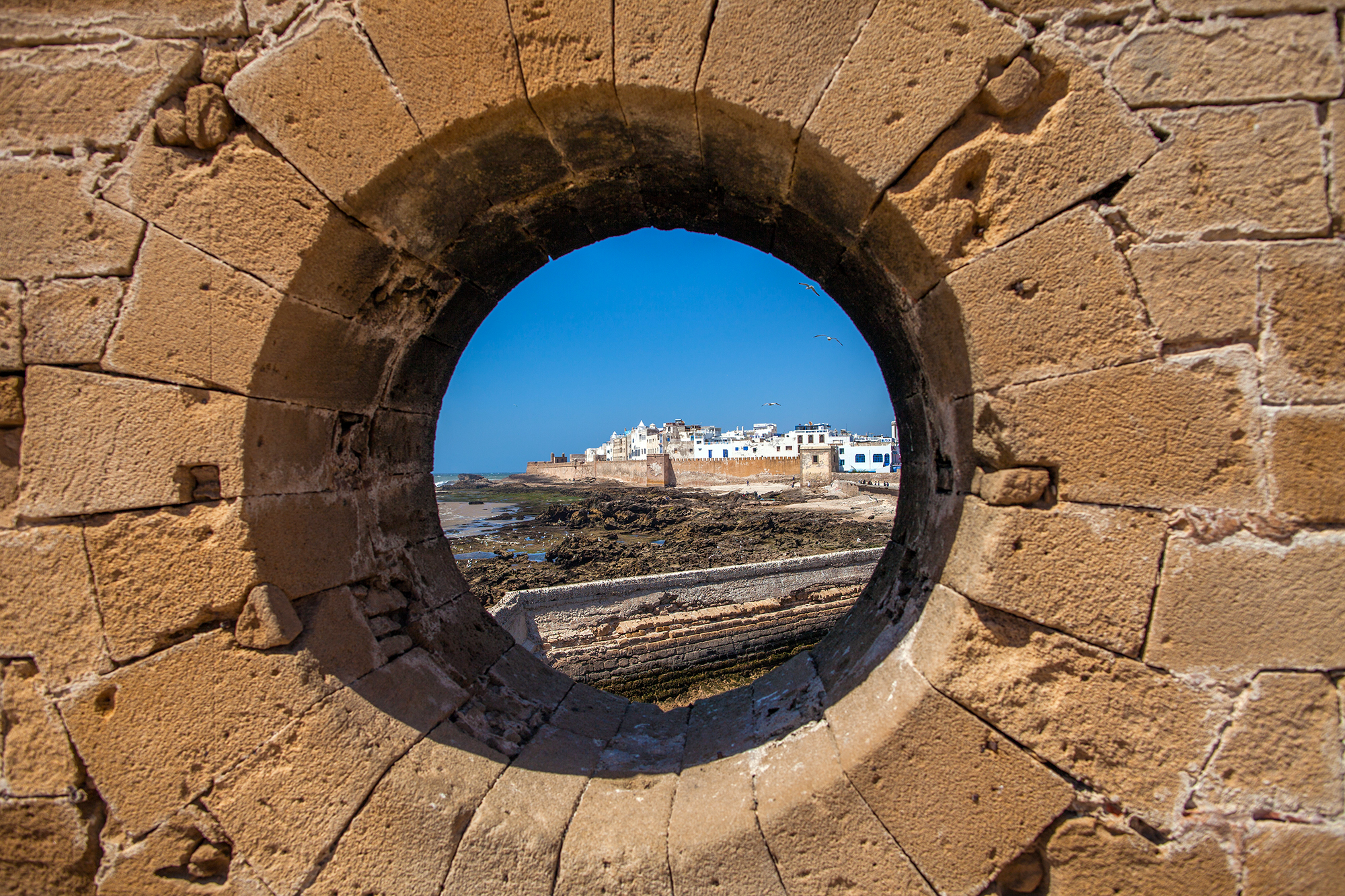Essaouira is an enchanting, Atlantic coastal port city with a medieval and modern bohemian vibe. Originally called Mogadar by the Phoenician’s coming from their word migdol which means “small fortress”, Essaouira adopted its current name not that long ago in 1960. Roughly a 2.5 to 3-hour drive from Marrakech, it’s the perfect getaway from the fast-paced big city.
The weather here is generally pleasant with plenty of sunshine and cool, ocean breezes that keep the town from overheating during the heat of the summer. Art, music, history, and seafood are Essaouira’s main attractions and there is plenty to see and do here.
Skala de la Ville
These ancient city walls or ramparts were built by the Portuguese during the 18th century to protect them from being washed away by massive, Atlantic waves and to act as a defense against pirates. It was equipped with 19 bronze cannons that can still be seen today. From here, you can take in spectacular views of both the Atlantic and the Mediterranean. It’s a great place to watch the sunset with the silhouettes of Mogador Island and its Purple Islands (lles Purpuraires) on the horizon keeping the wild winds at bay. The internationally popular TV series, “Game of Thrones” used this location in Season 3 and you’ll see why this makes a fantastic cinematic location.
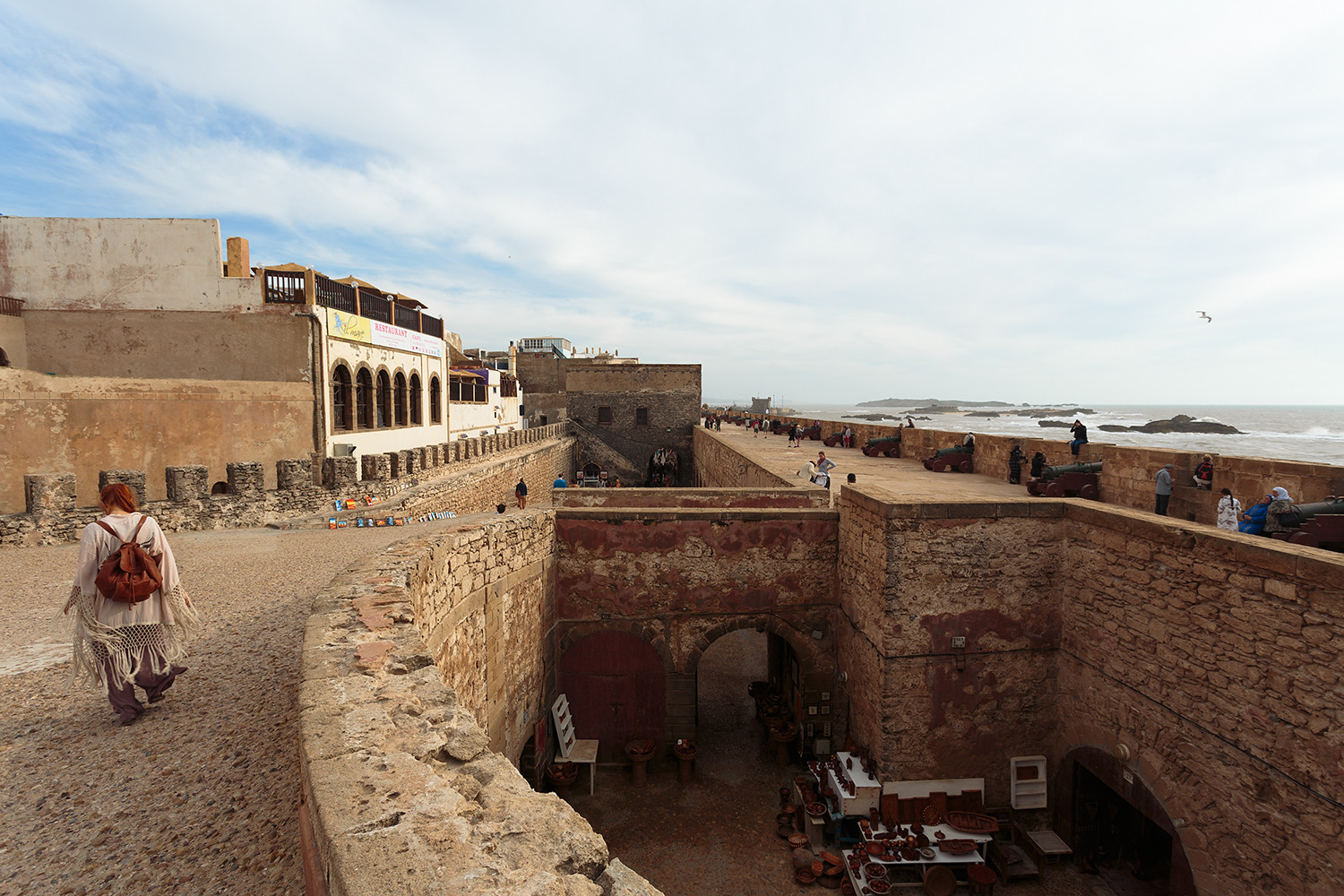
Cooperative Artisanale des Marqueteurs
Visit this woodworkers cooperative and you’ll be mesmerized as you watch these masters craft stunning treasures on site. Thuya wood is a type of evergreen tree that is native to Morocco. Artisans have used this wood for centuries to make decorative boxes often inlaid with mother-of-pearl and other wooden objects like furniture. In recent years, artisans have switched to using cedar or walnut wood to preserve thuya as its numbers are decreasing. Thuya wood is also aromatic so this sensory effect enhances the beauty of the handmade work of art. Pick up an authentic souvenir made right before your eyes.
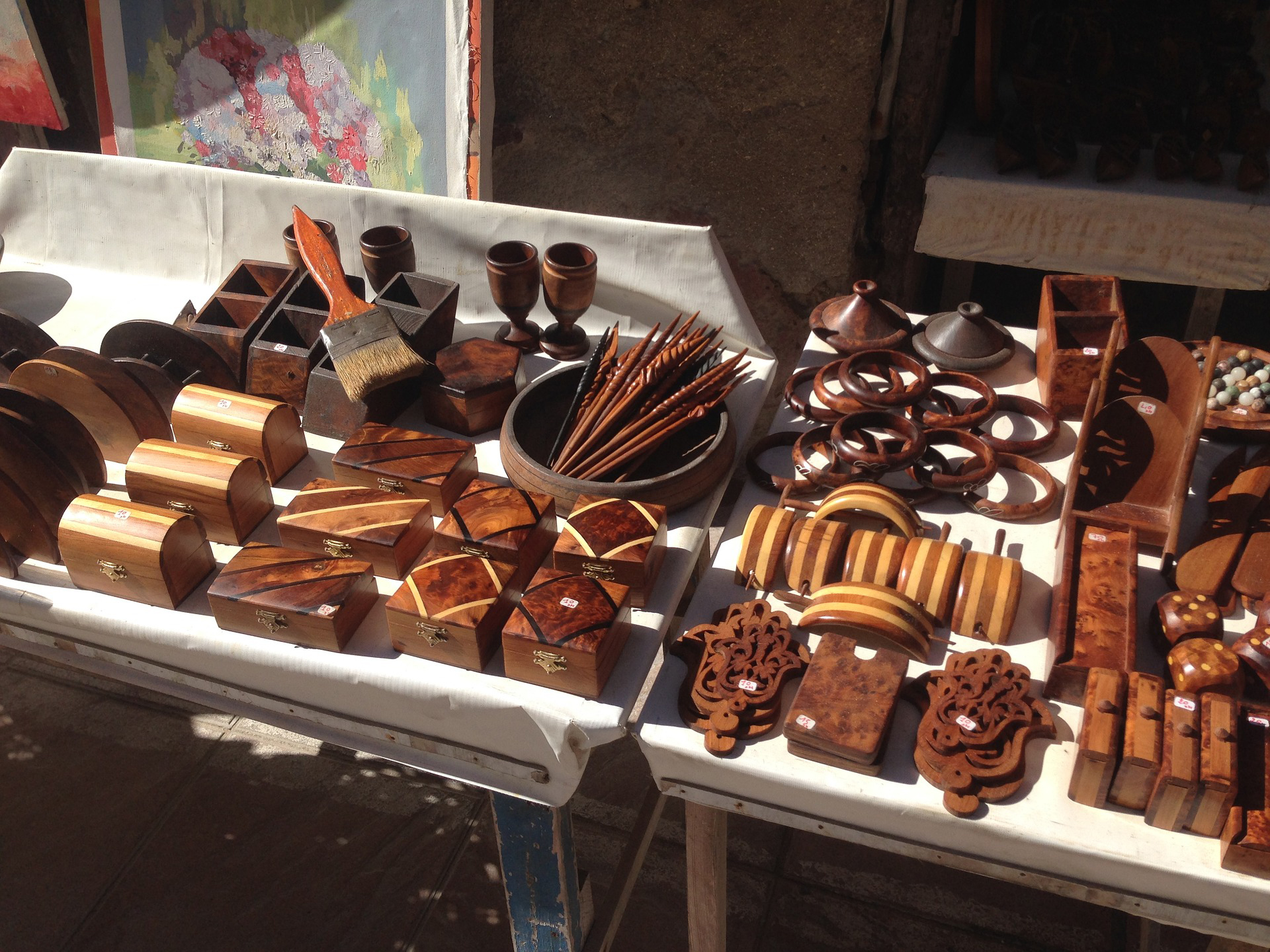
Medina
Essaouira’s medina was built on a multicultural foundation that which its inhabitants lived together harmoniously for centuries. Amazighs (Berber) Africans, Arabs, and Europeans all of the diverse religious backgrounds peacefully co-existed here and continue to do so today. This rich and varied ethnic tapestry can be seen in everything from textiles, ceramics, leather goods, art, music, and food. This Medina is less intimitating than the big cities but just as colorful and eclectic.
The souks around here are packed with original handicrafts from kaftans (robe/tunic) to Amazigh-inspired silver jewelry and other local arts and crafts. This is also the perfect opportunity to engage with the locals and practice your Moroccan Arabic skills. Exit via the Bab al Bahar and it will take you right to the ocean’s front door.
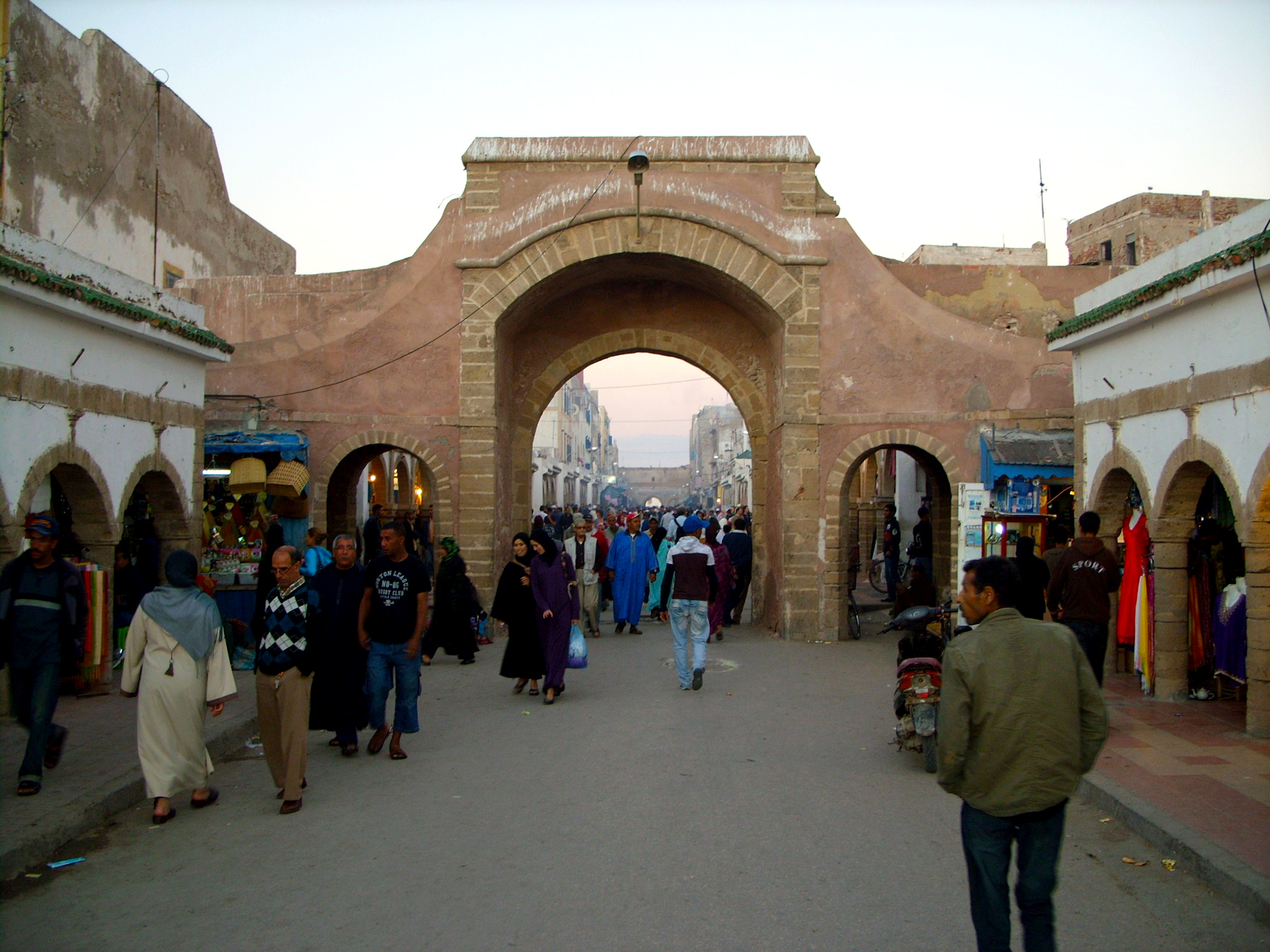
Jewish Quarter (Mellah)
At one point during history, Essaouira had one of the largest Jewish populations in Morocco. This Mellah was established by Sultan Sidi Mohammed Ben Abdellah to protect the Jewish people, but also exploited Jewish merchant’s business connections in Europe. There were several synagogues in the town, but only one still operates today. Today, very few Jewish residents remain as many have fled to bigger cities or emigrated to Israel post-1947.
Sadly, many of these buildings are in bad shape and in desperate need of repair and renovation. There are two, small synagogues that have been restored and preserved as historic sites that are open to the public. Despite the emptiness and lack of activity, many Jews make an annual pilgrimage here in memory of Rabbi Haim Pinto’s death in 1895. Once the Rabbi of Essaouira, his legacy as an iconic Jewish religious figure is not forgotten.
You can visit Bayt Dakira (House of Memory) a museum dedicated to the preservation of Jewish heritage in Essaouira. This cultural space includes a temple, a library, temporary art exhibitions, and a cultural residence for researchers. There are also Jewish cultural objects on display such as photographs, traditional clothing, audio, and visual recordings. This is an excellent way to dig a little deeper and learn about the cultural history of Jews in Essaouira.
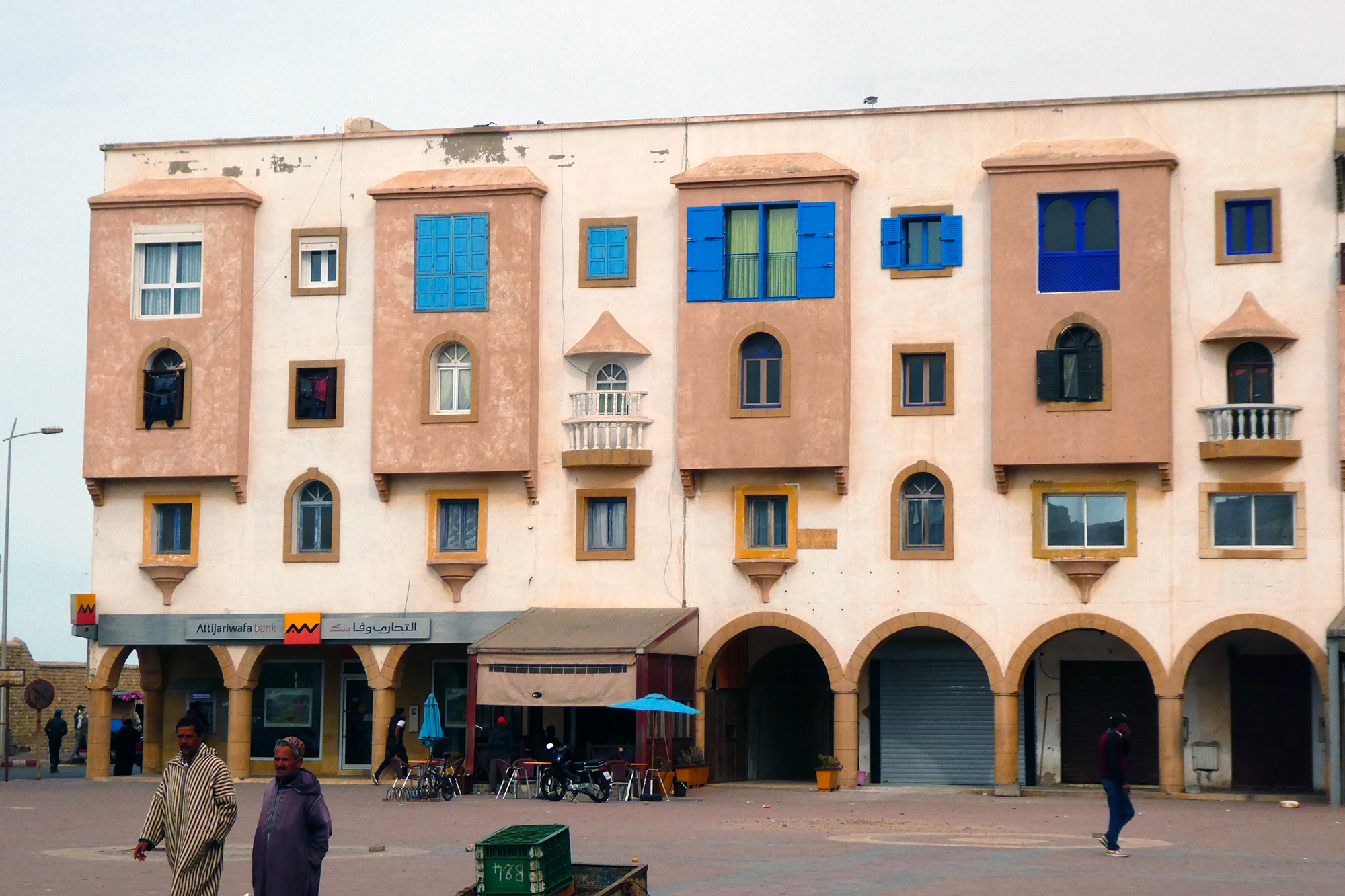
Citadel (Fortress)
As you pass through the mammoth arch of Bab el Mersa (the historic gate that connects the sea to the city) you will be greeted at the port by a cluster of dynamic blue fishing boats known as floukas. This feels like a scene straight out of an epic film about the medieval ages with fishermen unloading their daily catch of fresh saltwater treasures for you to take your pick of what’s for dinner.
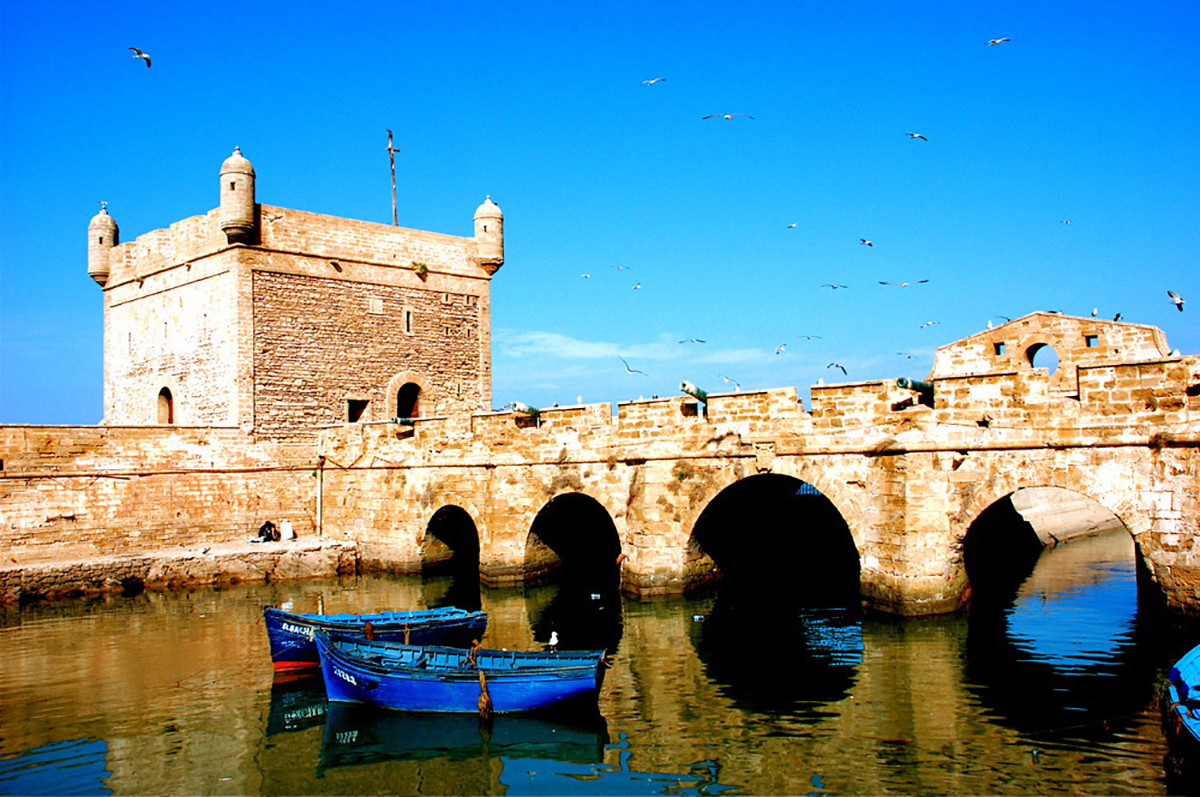
Bordj El Berod
Are you up for a little adventure? Take a walk along the beach heading south from Essaouira to reach the ruins of an ancient stone watchtower that has been dubbed ‘’the castle in the sand’’. Located just outside the village of Diabat, this structure serves as a fascinating piece of history that has been coated with layers of sand over the years transforming it into a fossilized monument. This site serves as a dramatic backdrop for a photo shoot and as you take a closer look, you’ll notice how it magically sparkles under the sun.
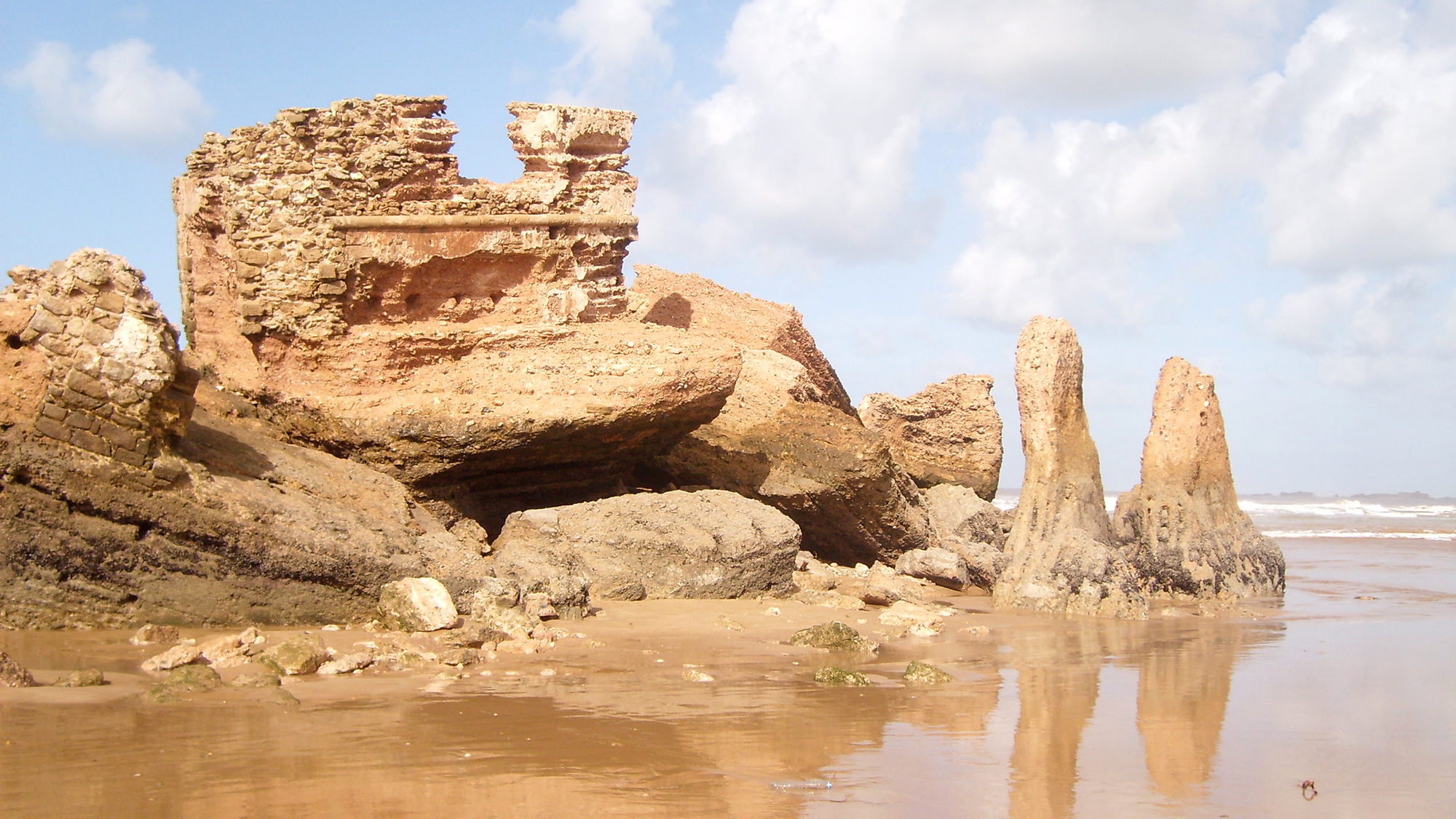
Mogador Island (Purple Island)
While you can’t actually step foot on this island without being granted special permission, it’s totally worth taking a boat trip around it to see all the buzzing activity of birds that swarm around it. Mogador Island is located across from the port of Essaouira and is a protected wildlife sanctuary that is off-limits to the public. It has witnessed a long history that dates back to prehistoric times. It was here the Phoenicians discovered the murex shell and established indigo dye production using the crushed bodies of these saltwater crustaceans to extract their glorious color. Later, came the Romans who produced their prized Tyrian Purple using the same process. Centuries of settlers came and went integrating this island into the culture of Morocco. Throughout the years, fortifications were built for protection, a mosque was erected, and constructed an open-air prison.
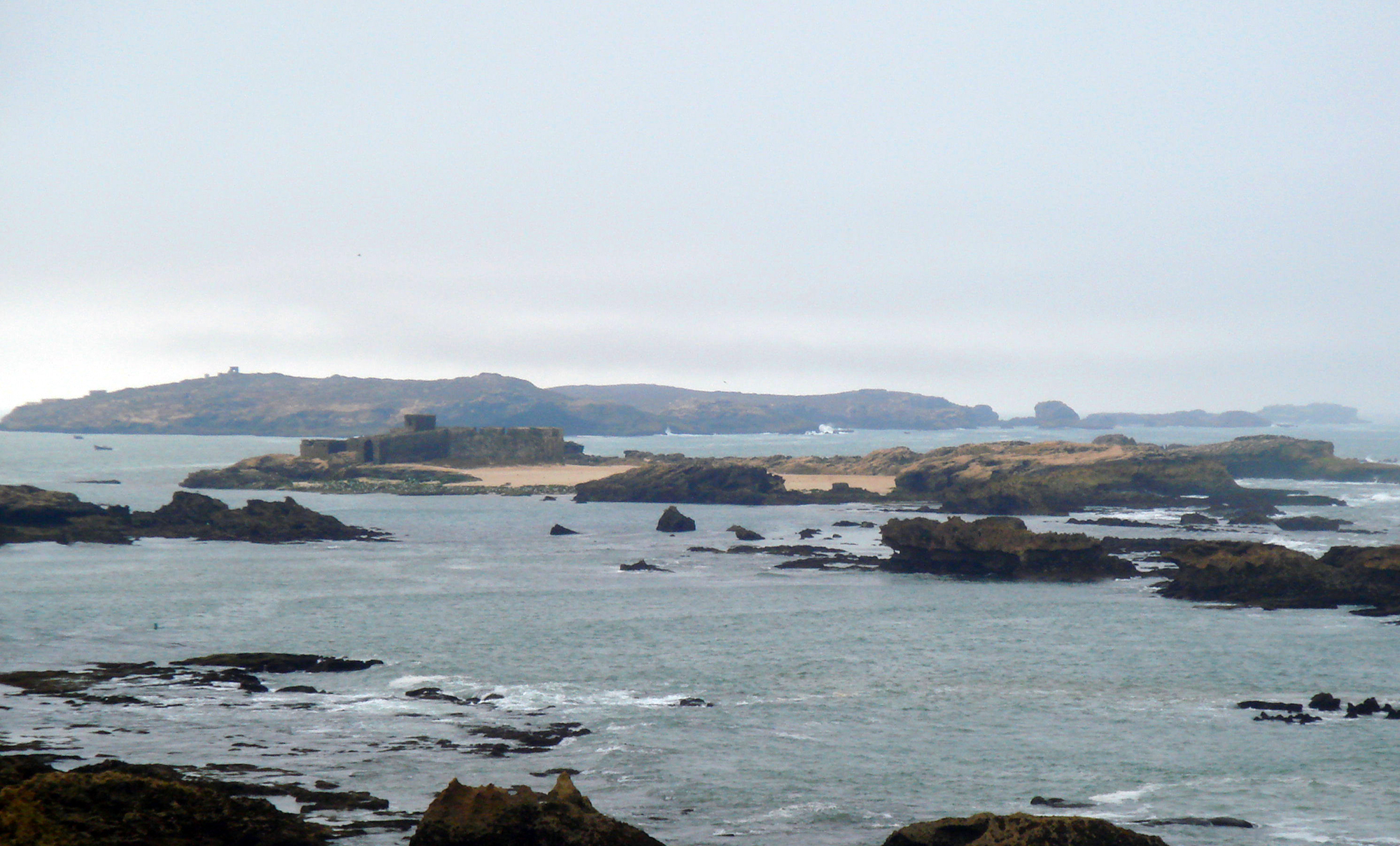
Essaouira Beach
Famous for its Alize or tropical trade winds, Essaouira Beach is an amazing place for watersports such as kiting and windsurfing. Equipment can be rented from local vendors and professional teachers are happy to guide you along and teach you a few moves. Quad biking adventures are also available if you want to explore beyond the city walls and go deeper into nature.
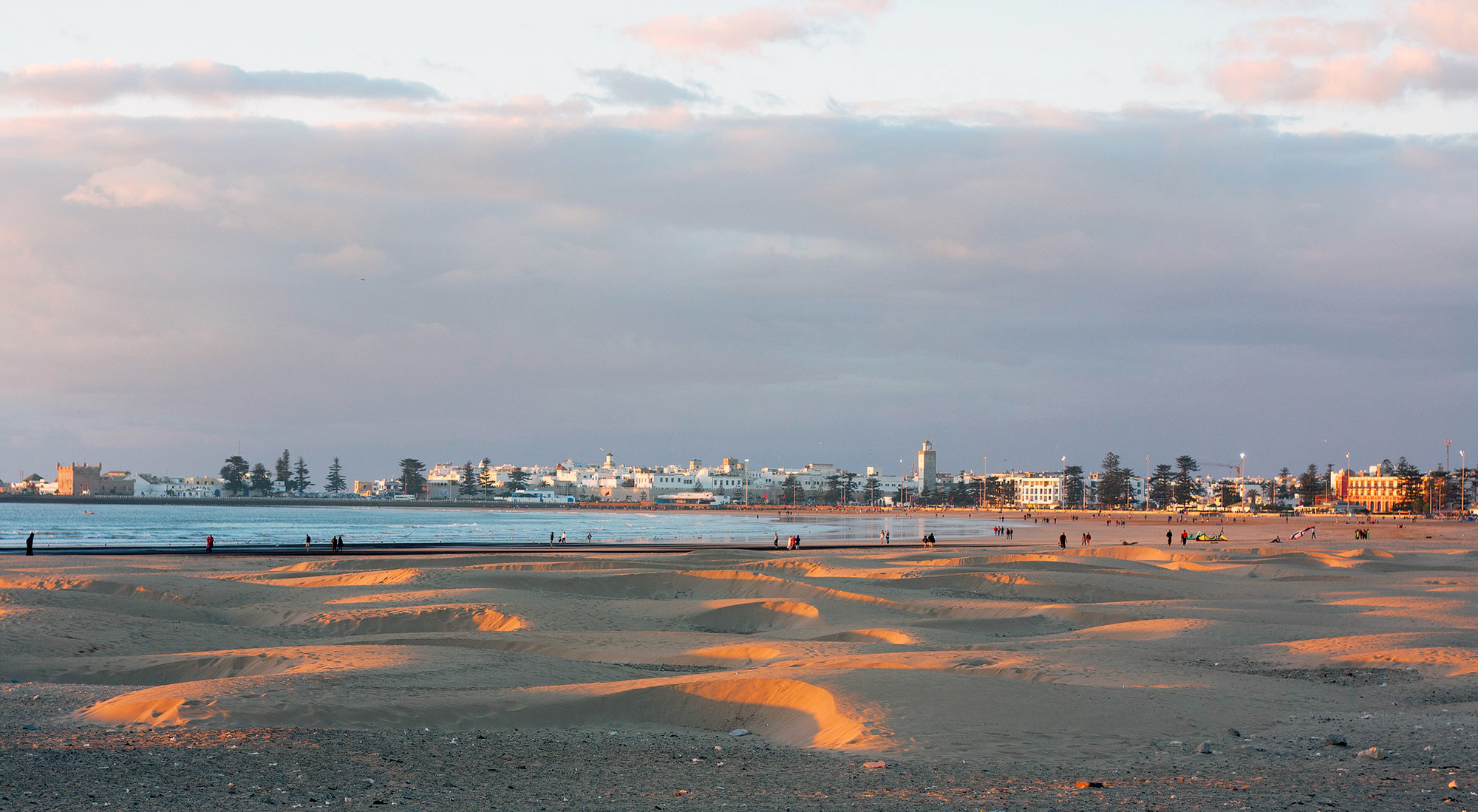
Art and Music
Essaouira is home to many native and international artists and musicians. The city also hosts annual cultural events and two major festivals. The Festival des Alizes hosts jazz and classical musicians from all around the world in April. The Gnaoua Music Festival is a four-day-long event in June that brings together native and world musicians that will hypnotize your senses and make you want to join the dancing festivities. You can wander around the town any time of year to browse some of its art galleries that exhibit the work of local, native and international artists. Escape Othello shows paintings and sculptures by local artists as does Galerie d’Art Frederic Damgaard.
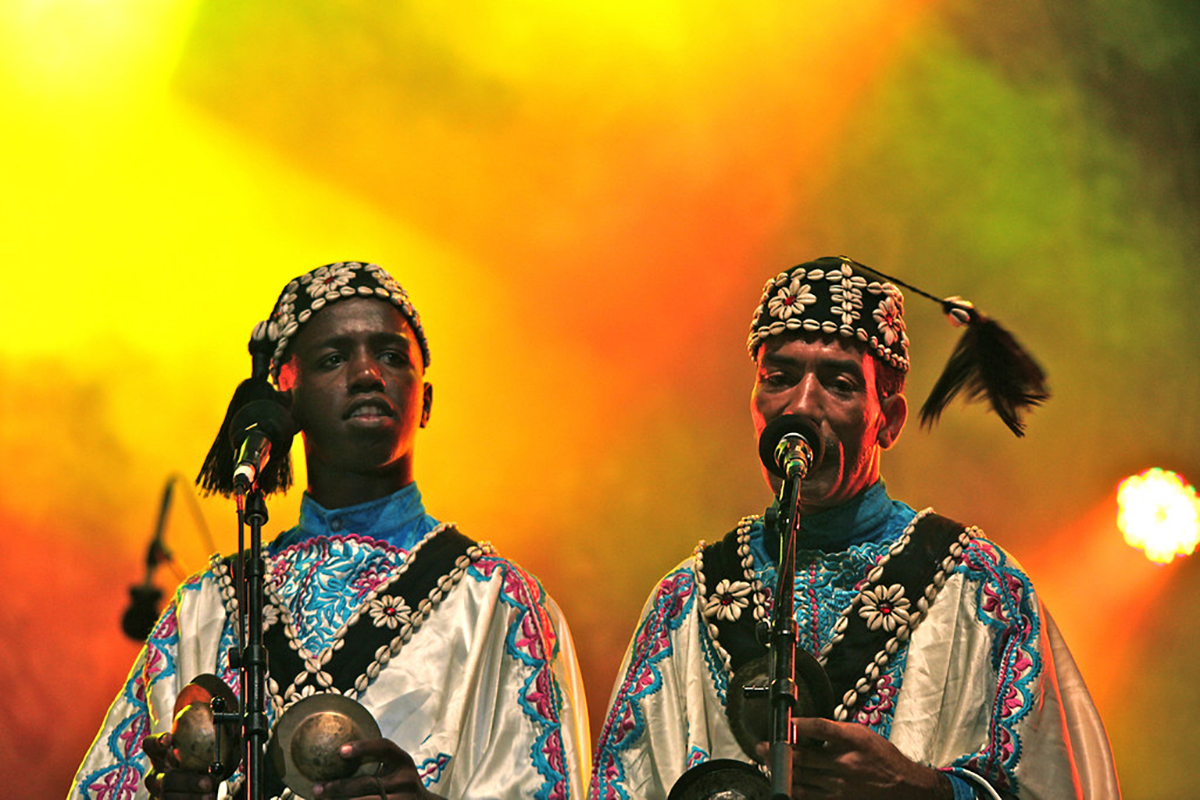
Sidi Mohamed ben Abdellah Museum
Dedicated to the founder of the city, this ethnographic museum showcases a historical treasure trove of remarkable cultural artifacts that relate to the heritage of Essaouira. Housed in a former 19th-century riad, the museum itself is stunning. You will see fascinating relics collected from over the centuries that include antique musical instruments, traditional costumes, ritual objects, ancient pottery, jewelry, woodwork, and weapons. There is also an in-depth look into Amazigh (Berber) culture and heritage so you can learn more facts about Morocco culture.
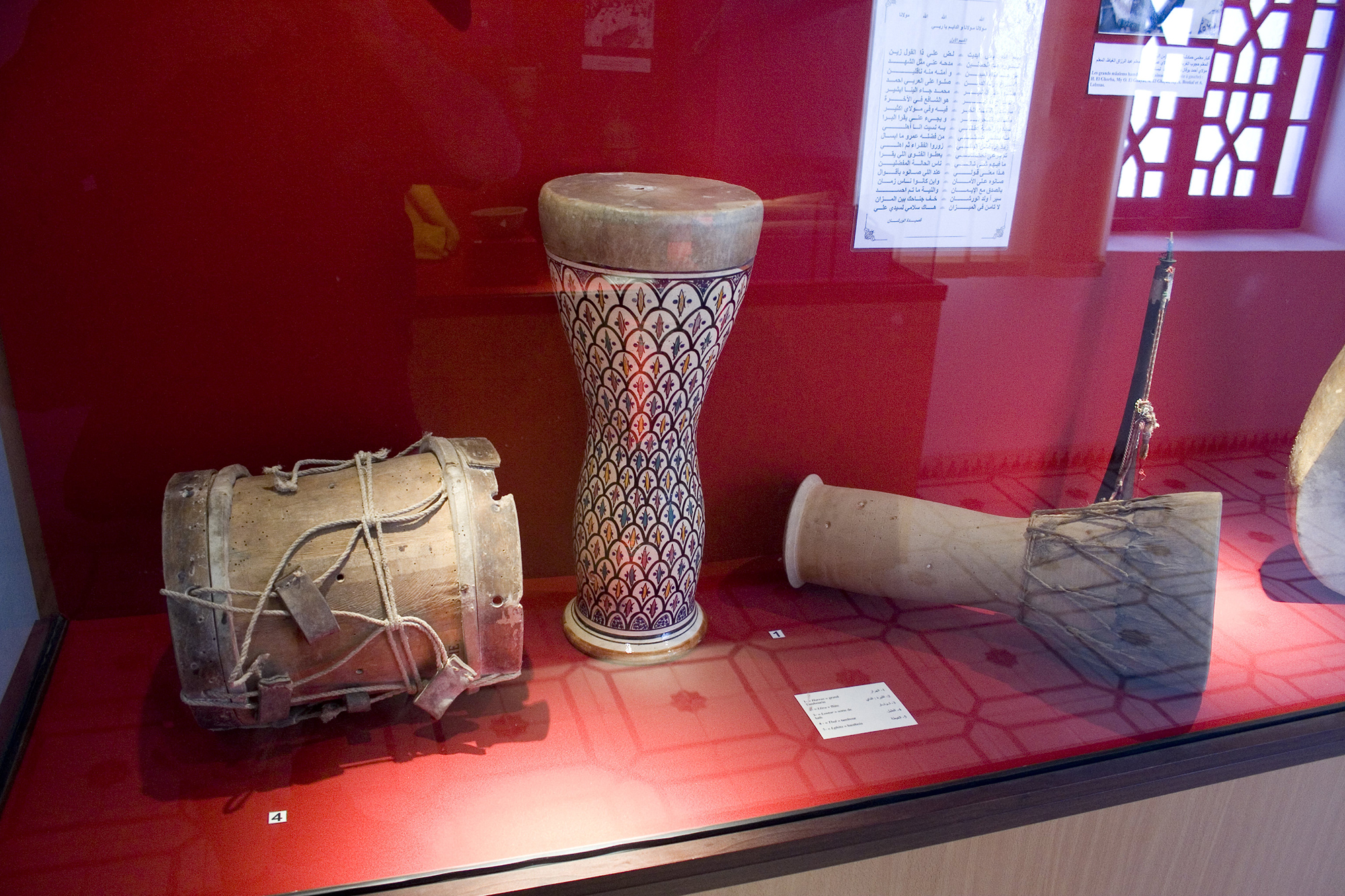
Essaouira is nothing short of magical and a trip here will certainly refresh your creativity, ignite your imagination, and leave you with long-lasting, unforgettable experiences.
